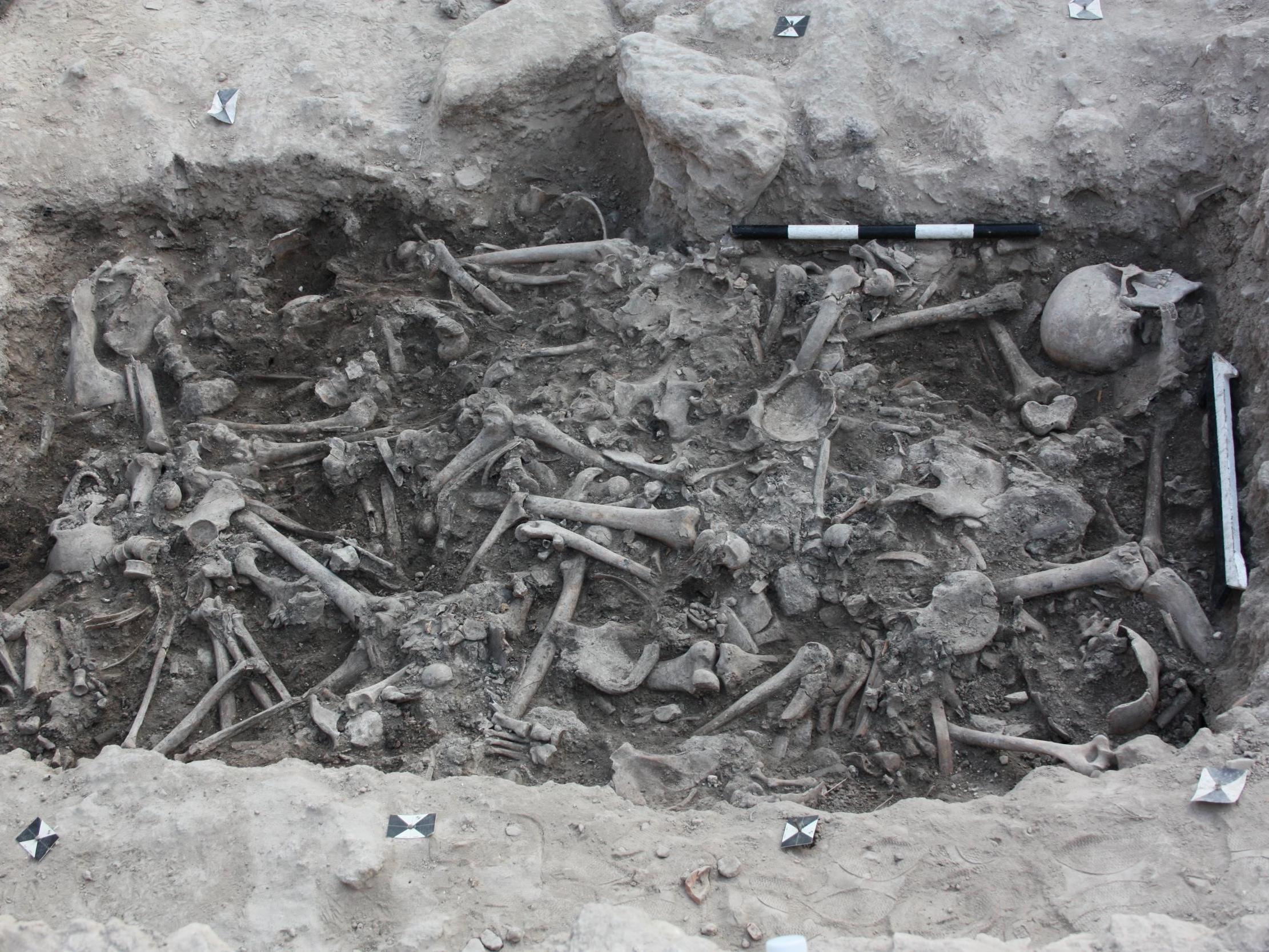Fighters in Crusades had families with locals and recruited offspring to cause, study shows
Research reveals medieval campaign lasting two centuries had little genetic impact on local population

Your support helps us to tell the story
From reproductive rights to climate change to Big Tech, The Independent is on the ground when the story is developing. Whether it's investigating the financials of Elon Musk's pro-Trump PAC or producing our latest documentary, 'The A Word', which shines a light on the American women fighting for reproductive rights, we know how important it is to parse out the facts from the messaging.
At such a critical moment in US history, we need reporters on the ground. Your donation allows us to keep sending journalists to speak to both sides of the story.
The Independent is trusted by Americans across the entire political spectrum. And unlike many other quality news outlets, we choose not to lock Americans out of our reporting and analysis with paywalls. We believe quality journalism should be available to everyone, paid for by those who can afford it.
Your support makes all the difference.The first DNA analysis of people who fought for Christianity in the near East during the Crusades reveals a mixed genetic makeup of fighters, indicating soldiers had offspring with locals and recruited them to their cause.
During the medieval period, huge numbers of Europeans travelled to newly established Christian states on the eastern Mediterranean coast.
Over two centuries, starting in 1095, hundreds of thousands of Europeans went to fight in the Crusades in an effort to wrest control of the “holy lands” from Muslim rule.
It is known that western nobility led the Crusades, but historical records lack details of the ordinary soldiers who travelled to, lived and died in the near East.
The new study, by an international team working with the Wellcome Sanger Institute in the UK, undertook DNA sequencing of skeletons found in mass burial sites in modern Lebanon.
It confirmed that the Crusaders mixed with local people and recruited them as fighters, but it also revealed their genetic presence in the region was short-lived.
“Historical documents tell us the names of the nobility who led the Crusades, but the identities of the soldiers remained a mystery,” said Dr Chris Tyler-Smith, from the Wellcome Sanger Institute.
“Genomics gives an unprecedented view of the past and shows the Crusaders originated from western Europe and recruited local people of the near East to join them in battle. The Crusaders and near Easterners lived, fought and died side by side.”
The paper, published in the American Journal of Human Genetics, says: “A recent archaeological excavation in Sidon near the remains of a Crusader castle uncovered two mass burials consisting of skeletal remains from a minimum of 25 individuals who had signs of interpersonal violent injuries.”
The remains were carbon-dated to the years 1025-1283.
“The location, date and condition of the burials, together with a Crusader coin issued in Italy in 1245-1250, and five buckles with designs associated with medieval Europe, all suggest that the burials could have been Crusaders killed in battle during the 13th Century.”
All of those found in the pit were male and had been violently killed during battle, with the research team saying they found blunt force injuries to skulls and other bones. Their bodies had apparently been disposed of in the pit and burned.
Nearby, a single skull was also found. The decapitated head may have been used as a projectile catapulted into an enemy camp to spread disease and lower morale, which the team said illustrates the brutality of the battles.
Of the nine skeletons they analysed, The scientists said three individuals were Europeans of diverse origins, including Spain and Sardinia, four were near local eastern Mediterranean people who had been recruited to the fight, and two individuals had mixed genetic ancestry, suggesting they were the descendants of mixed relationships between Crusaders and the locals.
But the researchers believe the Crusaders’ influence in the region was short-lived as European genetic traces are insignificant in people living in Lebanon today.
When they sequenced the DNA of people living in Lebanon 2,000 years ago during the Roman period, long before the Crusades, they found today’s Lebanese population is genetically similar to the Roman Lebanese, suggesting the Crusades had no lasting impact on Lebanese genetics.
Dr Marc Haber, from the Wellcome Sanger Institute, said: “The Crusaders travelled to the near East and had relationships with the local people, with their sons later joining to fight their cause. However, after the fighting had finished, the mixed generation married into the local population and the genetic traces of the Crusaders were quickly lost.”
The research team worked with archaeologists at the Sidon excavation site to transfer the bones from Lebanon to a laboratory in Cambridge dedicated to ancient DNA.
Small portions of the surviving 800 year-old DNA were extracted from the temporal bone in the skulls.
The process was particularly difficult as the warm dry conditions which had preserved bones are also highly degrading to DNA, and only through recent advances in DNA extraction and sequencing technology were they able to piece together the data.
Dr Claude Doumet-Serhal, the director of the Sidon excavation site in Lebanon, said: “I was thrilled to discover the genetic identities of the people who lived in the near East during the Crusades.
“Only five years ago, studies like this would not have been possible. The uniting of archaeologists and geneticists creates an incredible opportunity to interpret significant events throughout history.”
Join our commenting forum
Join thought-provoking conversations, follow other Independent readers and see their replies
Comments